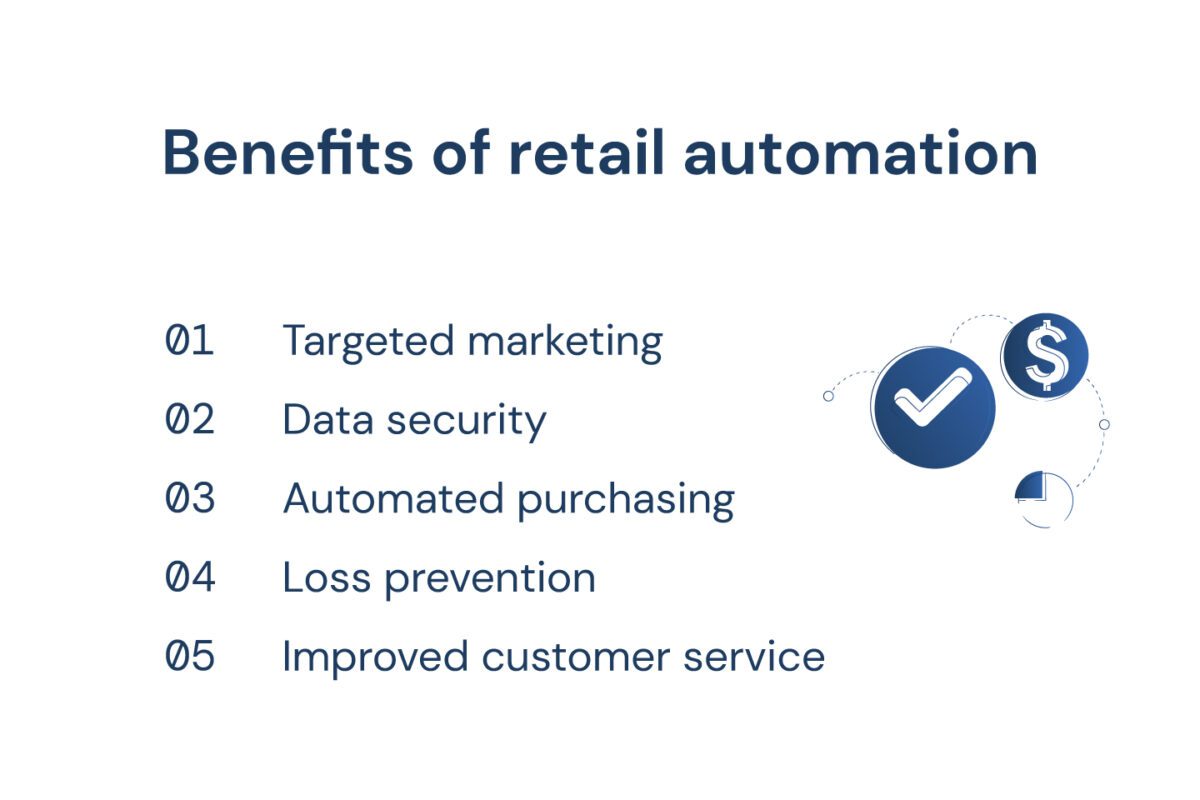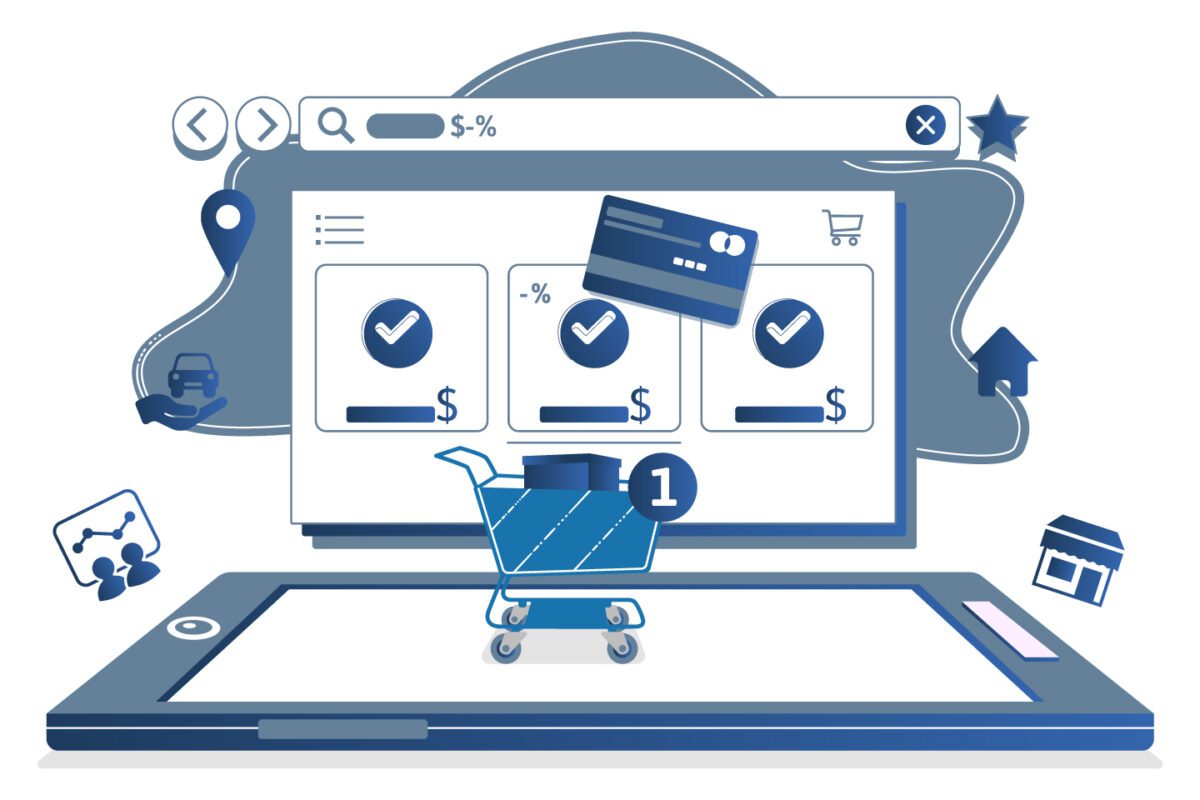Retail companies are coming out with innovative ideas that will help outsmart the competition. Retail store automation is one of the retail industry’s most effective solutions for increasing sales while decreasing costs. It streamlines inventory control, stores operational details, improves performance, and ultimately makes life easier for your customers.
What is retail automation?
Retail is one of the largest industries in the world. You, us, everyone else on the planet buys things. It ranges from clothes to electronics to housewares. Groceries, electronics, pet supplies, cleaning products… you name it…The retail automation revolution is probably one of the most exciting times in the retail industry right now.
The State of Retail in 2022 industry is changing with the advent of new technologies. Automation has significantly changed the way in which traditional forms of retail companies functioned. From point-of-sale (POS) systems to inventory management, and customer satisfaction, retail automation makes it easier for retailer companies to manage their core processes as well as their strategic goals.
State of Retail in 2021
Retail automation is on the rise. And, with the help of artificial intelligence and machine learning, this trend isn’t going away anytime soon. Retailers have realized that these technologies can help them improve the shopping experience for customers and increase their profits at the same time. In a recent study by National Retail Federation, 83 percent of consumers say that convenience when shopping is more important now than it was five years ago.
The retail industry is undergoing a revolution thanks to changing consumer behaviors, increased expenses, increasing online shopping websites, and the increasing importance of generating customer loyalty. Today’s retailers are using automation systems to help grow customer engagement, increase sales, and make their operations more efficient.
Retail automation technology is in the process of changing the landscape of retail automation companies, with technological advancements proving to be game-changers in terms of productivity, efficiency, and sales. Research suggests that the global retail automation market size is projected to reach $23.58 billion by 2026, growing at a CAGR of 9.6% during the forecast period from 2019 to 2026.

Is automation important in retail?
Retail automation is no longer a futuristic nuance of cyberpunk science fiction; it is here and now. From self-serve checkouts to mobile payments for online shopping websites, from inventory tracking to sales monitoring – automation has already embraced retail.
How to save labor cost?
The unending demand for automation in retail is now churning out some of the most advanced technologies, mainly those related to point-of-sale (POS) solutions and self-checkout systems as these systems automate labor-intensive tasks such as inventory management, Barcode & RFID, electronic shelf label (ESL) printing, tracing, and locating unsold inventory. The staff can be managed more efficiently and at a lower cost as machines replaced them for routine functions.

Allows self-checkouts
Nearly all businesses have been ‘re-invented’ thanks to technology advancements. Along with the advent of self-checkout systems, automation is transforming the retail industry and how customers interact with staff and products. The question is: Why are so many retailers turning to self-checkout? It’s quite simple, really.
Retailers are becoming more omnichannel, and self-checkout counter technology makes that possible. Self-checkout improves overall customer experience, which ultimately means spending less to acquire new customers. Many factors contribute to the rise of self-checkout, including consumer preference and convenience. Self-Checkout saves you the inconvenience of waiting in line, getting lost in each aisle, or dealing with an employee who can’t help you find what you need.

Lowers human error rate
Every year retailers and e-commerce sites lose billions of dollars due to human error or in some cases theft and fraud. Retail automation software can make a big difference when it comes to lowering the rate of human errors and this is where we see most modern-day retailers shifting their focus.
Today’s retail industry needs to deal with such problems such as minimizing the instances of purchase returns, tracking inventory levels, providing customers with accurate real-time messages, target their marketing messages based on each customer’s profile and preferences, track sales reports automatically, minimize loss due to spoilage, check out quickly etc.
Better visibility and insight into reporting
Are you looking for a way to increase sales and drive more revenue into your organization? Retail automation may just be the answer you’re looking for. Businesses are adopting solutions that uses large amounts of data to optimize their entire organization. Retail analytics help organizations to make proactive decisions by seeking patterns and trends from immense datasets.

Order management
Modern businesses in the field of trade and logistics can use a large amount of retail automation devices in their warehouse. Each of these innovative elements has a specific purpose and adds a certain functionality to the whole business system.
Predictive analytics for customer support
The retail industry is currently working hard to cater to shifting consumer lifestyles by leveraging data analytics. Business leaders are investing in improving processes through the use of automation software, which has started to shape up the industry’s operations moving forward. Retailers are using data to gain insights into customer behavior. It allows them to anticipate changes in demand and adjust inventory automatically, resulting in reduced costs.
In-store assistance and automation
In today’s fast paced environment, consumers have a shorter attention span. Retail automation is used to improve customer service by providing shoppers with live help from a knowledgeable point of sale, as well as providing an interactive retail environment from a mobile platform online.
Automated retail agents are now able to assist customers 24/7 without requiring for them to physically go inside the store. This is becoming possible due to online stores and advancements in application software, sensors, computer vision and voice recognition. Through these key elements, automated assistance is getting closer to reality to provide people with real-time answers.
How much is the retail industry worth?
Are you aware that the retail industry is actually one of the biggest industries in the USA? The retail industry is worth over $7.53 trillion USD and is the number one employer in the U.S. alone, with 15.5 million employees. It’s so vast and so huge that it cannot be faced alone, and even the biggest players — Walmart — will require some automation to build a shared data economy.
What are the trends in automated retail?
There are countless retail automation solutions available to retailers big and small, but is any of them right for your business, and how do you know? These retail automation trends will help you through.
Omnichannel retail marketing is leading the corporate sector
Omnichannel retailing means integrating a company’s in-store systems with its online shopping websites and mobile channels in a bid to offer customers a seamless shopping experience. Retail automation is a powerful tool for achieving this goal. It is enabling the industry to gather customer data, such as their location and browsing history. This not only helps retailers get an accurate picture of customer trends and patterns. It also allows them to send targeted marketing messages. It also helps them to engage with more customers, improve product visibility, and optimize inventory right across all outlets.
Data-driven consumer journeys
Data is the new oil and information is the new currency. Retailers are increasingly investing in revenue enhancing analytics to improve business decisions. Especially for return on investment (ROI) they bring to the business. Acutely aware of customer behavior and patterns, companies can gain insight to consumer shopping behaviors in real time.
Retailers are shifting online
Online grocery shopping is a growing trend and so are online clothing stores. According to a recent study by eMarketer, retail stores sales will decline through the forecast period of 2016-2021 indicating massive rise in “ retail e-commerce sales”. Another recent study by Deloitte, for instance, has found that nearly 25% of traditional retailers are planning store closures this year alone suggesting that E-commerce is the future of retail. And interestingly, it has given birth to retail automation in the form of online stores. Retail automation didn’t exist before e-commerce. It is nothing but the result of online shopping websites.
With the increase in advanced communication networks and mobile technologies, online shopping sites is on the rise with the world’s retail industry. To fill orders, there’s a high demand for retail automation software. It’s also widely used to create mobile shopping apps that can help merchants run their business better. The biggest benefit of online shopping websites is that anyone can access them anytime through mobile apps.
What we gain from our retail automation?
When we think about retail automation, we can immediately conclude that it is about cost saving. But as the retail automation market changes and grows at a rapid rate. Retailers are realizing that automation is not just about saving money. Instead, it’s about creating an experience their customers love by enhancing their business with technology.
Retailers are using automation to give shoppers a hands-on experience regardless of whether they are in-store or online stores by providing information at fingertips and enabling shoppers to interact with staff.
Please visit more informative work…









